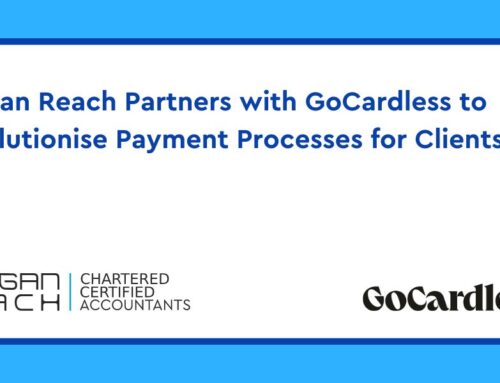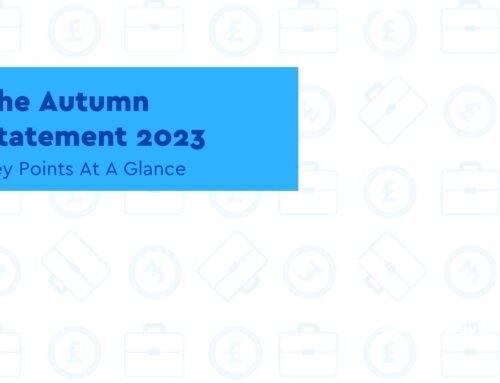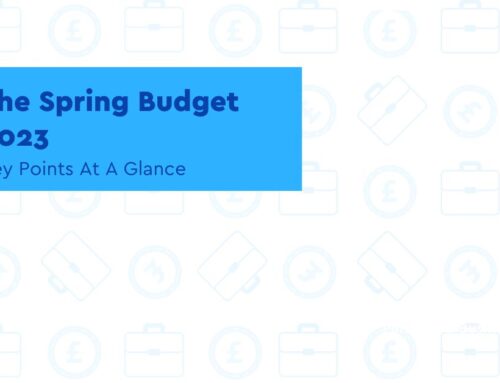News – Spring Statement
What could we see in the Spring Statement?
___________________________________
March 17, 2022
Key Points
- The temporary cut to the Lifetime ISA exit penalty could be reintroduced
- Could we see additional household support and a six-month extension to the Recovery Loan Scheme?
Chancellor Rishi Sunak is set to deliver his eagerly-anticipated Spring statement to the House of Commons next week, which is expected to provide an update on the Government’s financial strategy as laid out in last year’s Budget.
The Office for Budget Responsibility (OBR) has been commissioned by Mr Sunak to produce an economic and fiscal forecast for Wednesday 23 March, with the Chancellor expected to provide a statement that same day.
The policy levers available to the Chancellor in this crisis are very different from the last. During the pandemic, the Chancellor could move quickly to provide substantial financial support packages. Record low borrowing costs meant the government could do this without shifting the dial on debt repayment costs. With the current crisis, however, the Chancellor is dealing with global forces far beyond his immediate control.
Could the National Insurance hike be delayed?
In September last year, it was announced that most people will see their National Insurance contributions rise from 12% to 13.25% in April 2022 – a hike in contributions of 10.4%.
But to help people with the surge in living costs, the Government could delay the hike, providing people with more breathing space and more cash.
Fuel duty may be frozen again
The cost of fuel has risen massively of late, with the average price of both petrol and diesel hitting new record highs this week. Some fear a litre of petrol will soon reach £2.
But we could see a continued freeze in fuel duty, or even the scrapping of it all together. Fuel duties were frozen for the 12th year in a row in the Chancellor’s Autumn Budget 2021, meaning it remains at 57.95p a litre.
Fuel duty is included in the price paid for petrol and diesel.
The temporary cut to the Lifetime ISA exit penalty could be reintroduced
During the Coronavirus pandemic, the Government reduced the Lifetime ISA exit penalty to 20% from 25% in a bid to help people save money if they needed to access their savings for emergencies. This then jumped back to 25% in April 2021. But the Government could decide to reintroduce this reduced rate, drop it further, or cut the penalty entirely.
The Lifetime ISA lets you save up to £4,000 a year towards your first home or retirement, and gives you a 25% cash bonus of up to £1,000 a year on top.
You can hold cash or stocks and shares in your Lifetime ISA, or have a combination of both.
When you turn 50, you will not be able to pay into your Lifetime ISA or earn the 25% bonus. Your account will stay open and your savings will still earn interest or investment returns.
Revisiting the pensions lifetime allowance
The freezing of the pensions lifetime allowance at £1,073,100 until 2025/26 was one of a range of stealth taxes announced in the 2021 Spring Budget. By not increasing this in line with inflation, it is reducing the amount people can save in pensions in ‘real’ terms without facing an additional tax charge.
The allowance was designed to limit the amount of pensions tax relief for the wealthy, but now it increasingly impacts many not so wealthy people, particularly those with valuable defined benefit pensions. Many more individuals could face an unexpected tax penalty as a result.
Help with household costs
The government unveiled a package of measures worth up to £350 in February to help with rising household costs. This includes a £150 council tax rebate in April for qualifying council tax payers in England (similar measures have been announced in Scotland and Wales), and a £200 credit payment in October’s energy bill for everyone in England, Scotland and Wales that will need to be repaid over the next five years.
But with petrol prices reaching new highs, and inflation set to reach – and even exceed – 7% soon, there have been calls to increase this support.
Triple lock inflation linking
The triple lock is a mechanism used to calculate increases to the state pension each year. It guarantees the basic state pension rises by whichever is highest out of average earnings, inflation or 2.5%. The government ditched the earnings element of triple lock this year due to earnings distortions created by the pandemic.
As such, pensioners will see a below-inflation increase in their pension payments of 3.1%. This group could be hit hard with rising living costs as more of their money are spent on energy bills and food.
However, with the latest inflation figures released on the same morning as the Spring Statement, it raises questions about whether an alternative measure of inflation could be generated to base any state pension increase on to better reflect the current inflationary environment.
Unfreeze the income tax bands
The personal tax-free allowance will be frozen at £12,570 this April, and the higher rate income tax threshold will be frozen at £50,270.
The Treasury forecast this will cost taxpayers £1.6bn in the next tax year, while the freeze will cost someone on £30,000 a year an extra £1,101 in tax by 2026/27 when the freeze is due to end, and someone on £50,000 will face an extra £5,282 in tax.
Meanwhile, the British Chambers of Commerce (BCC) is urging the Chancellor to take bold and decisive action in his Spring Statement to tackle the escalating cost of doing business crisis. With a week to go, the BCC calls on the government to use the Spring Statement to enact the a Five Point Plan to Tackle the Cost of Doing Business Crisis:
- Delay the impending National Insurance rise by one year to give firms much-needed financial headroom to weather this unprecedented surge in costs facing businesses and power the recovery.
- Temporary energy price cap for small businesses to protect smaller firms from some of the price increases they would otherwise face, offering the same protection as households.
- Additional financial support, through the expansion of the energy bills rebate scheme for households to also include small firms and energy intensive businesses, a new support fund, administered by Ofgem to support the smallest firms with their soaring energy bills and a six-month extension to the Recovery Loan Scheme, leaving it in place until the end of 2022.
- A moratorium, for the life of this parliament, on all policy measures that increase business costs, including no new business taxes or added regulatory burdens, but excluding only evidence-based changes to the National Living Wage.
- A commitment from the government’s Supply Chain Advisory Group and Industry Taskforce to continue to work with industry to urgently deliver practical solutions to ease the supply chain disruption and labour shortages that continue to drive the upward pressure on prices.
News – Vehicle Grants
Businesses to benefit from extension to plug-in van and truck grants
___________________________________
March 16, 2022
Key Points
- Plug-in van and truck grants extended for 2 years as government goes further and faster to decarbonise transport
- Drivers with standard licences can continue driving electric goods vans at a higher weight limit, making it easier for businesses to make the switch
Businesses will be supported to make the switch to electric as the government commits to a 2-year extension of plug-in van and truck grants.
The move is expected to support the purchase of tens of thousands of greener vans and trucks, and will help make the UK less reliant on imports of foreign oil, improving the security of the UK’s energy supply and reducing vulnerability to volatility in global energy prices.
Last year, industry figures showed the UK had the highest number of plug-in electric vans sold in Europe and there were around 4 times as many grant applications compared to 2020.
Existing grants have supported the purchase of more than 26,000 electric vans and heavy goods vehicles (HGVs) across the UK since the programme launched in 2012.
With nearly 5% of the UK’s CO2 emissions currently coming from vans, the 2-year extension to these grants and the switch to greener vehicles is essential to support the government’s climate change and air quality commitments.
Transport Minister Trudy Harrison said:
“When it comes to clean business, this government means business. We are backing a generation of green growth for our thriving fleet sector.
“As demand for electric vehicles continues to grow at speed, this extension to our grant scheme will allow tens of thousands more vans to be purchased, transporting goods in a way which is kinder to our environment. This will support our vital, ongoing work to clean up our air in towns and cities right across the country and build back greener.”
Government grants for electric vans and trucks has helped kickstart the market, which now offers more than 30 models of electric vans and trucks which qualify for such schemes.
Electric vehicles are becoming more popular and affordable, and the number of available models will continue to rise, allowing more people and businesses to benefit from the lower running costs of greener vehicles.
This government has committed £2.5 billion to vehicle grants and chargepoint infrastructure to support the transition to zero emission vehicles to date, and plug-in vehicle grant schemes have supported the purchase of over 450,000 ultra-low emission vehicles across the UK – including more than 300,000 zero emission vehicles.
As well as the extension to grant schemes, the government has also announced it will continue to allow drivers holding standard car driving licences to drive electric goods vans at a higher weight limit, up to 4.25 tonnes (compared to a 3.5 tonne limit for diesel vans).
This takes into account the additional weight of electric vehicle batteries and makes it easier for businesses and drivers to make the switch.
To ensure funding and taxpayers’ money goes where it’s really needed and supports the transition to zero emission vehicles, eligibility criteria for existing plug-in vehicle grants will also be recategorised from the spring with a focus on heavier vehicles.
From April 1, 2022, the threshold to claim the small truck grant of up to £16,000 will be increased from 3.5 tonnes to 4.25 tonnes. Vans up to 4.25 tonnes will be able to claim the large van grant of up to £5,000.
With the increasing number of large vans on the market, the move will ensure government targets support where it’s most needed, allowing for heavier and more costly trucks, up to 12 tonnes, to benefit from the higher grant funding.
This change will ensure funding is focused on helping more polluting trucks to make the switch to a zero-emission future.
This article was sourced from: https://www.gov.uk/government/news/businesses-to-benefit-from-extension-to-plug-in-van-and-truck-grants
News – Pension
End of tax year pension planning
___________________________________
March 17, 2022
Key Points
- Tax relief makes your pension plan one of the most tax-efficient ways to save for your retirement
- You can use bonus sacrifice to pay any bonus into your pension plan and get the full amount invested
As the clock ticks down to the end of another tax year, here are three key tips to help your pension planning run smoothly.
Take care when ‘maximising’ your contributions
Tax relief makes your pension plan one of the most tax-efficient ways to save for your retirement. In a nutshell this means your contributions get topped up by the government, effectively making it cheaper to save more into your pension plan.
When you contribute to a pension, you can keep (or claim back) the amount you would have paid in income tax on that contribution. The tax relief is also added to your pension to help boost your savings. For example, if you had £100 of income and were a basic rate tax payer, you’d pay 20% (or £20) of income tax. If you paid £80 into a pension, your provider would reclaim £20 of tax relief. Alternatively, if you pay into a workplace scheme, your employer may be able to pay the £100 directly into your pension before the £20 is ever deducted.
The benefits are usually even more for higher or additional-rate taxpayers, although you’ll need to claim anything above 20% back from the government depending on how your contributions are being paid.
Some workplace pension schemes offer tax benefits in a different way (salary sacrifice or salary exchange schemes, for example). So do check with your employer how this works for you if you’re not sure.
The second limit is the annual allowance.
Your annual allowance is the most you can save in your pension pots in a tax year (April 6 to April 5) before you have to pay tax. You’ll only pay tax if you go above the annual allowance. This is £40,000 this tax year. Although you may also be able to ‘carry forward’ unused allowance from up to three previous tax years:
- The unused annual allowance (standard or tapered) of each of the last three tax years is carried forward and added to this year’s allowance.
- Carry forward from a particular tax year is only available if the employee was a member of a registered pension scheme in that year.
- The current year’s allowance is used first, then the allowance of the earliest available carry forward years, then the next earliest year and so on.
- No formal application is required, but if the annual allowance plus carry forward is exceeded the excess needs to be noted on the supplementary self-assessment form.
If the total value of your contributions (including any made by your employer or other third parties, and all the tax relief) exceeds the annual allowance, you will face an annual allowance charge. This charge is intended to take back the tax relief on the value of contributions above the annual allowance.
You’ll get a statement from your pension provider telling you if you go above the annual allowance in their scheme. If you’re in more than one pension scheme, ask each pension provider for statements.
Keep more of your bonus?
If you’re lucky enough to get a work bonus, you might have the option to put some or all of it into your pension plan. Doing this could save tax and National Insurance deductions, meaning you get to keep more of it in the long run. And it could be a good way to make the most of your current pension annual allowance before April 5.
If you’re due a bonus at the end of March for example, and take it all in your pay, you’ll pay tax on it (based on your earnings) as well as NI payments.
But if you opt to use bonus sacrifice to pay all of your bonus into your pension plan, you’ll get the full amount invested.
The first thing to do if you want to sacrifice your bonus is to check if your plan will accept payments from your employer. If they do, then before your money is paid, you’ll need to instruct your employer to pay an agreed percentage of your bonus into your pension pot.
If your plan doesn’t allow employer payments or bonus sacrifice, you can still deposit your bonus when your employer pays you. You won’t avoid taxes or National Insurance, but you will get pension tax relief.
Boost a spouse or child’s pension
If you’ve already maxed out your contributions, or you’d like to help a loved one save for the future, you can boost someone else’s pension too.
The amount you can contribute depends on the circumstances of the pension owner, not the person who is making contributions. The amount that someone can pay into their pension(s) every year is either £40,000 or 100% of their earnings, whichever is lower. Tax relief is automatically added to the pension pot at the basic rate.
If your partner has no earnings, you can contribute up to £2,880 to their pension every tax year, and they’ll still get up to £720 in basic rate tax relief.
This even applies to children. Much like a Junior ISA, parents and legal guardians may set up a pension for a child, which will pass to them when they are 18. Once set up, anyone can make contributions up to a total of £2,880 per year for a child, boosted to £3,600 gross. If your partner or child is earning, you can pay in up to their earnings (subject to the annual allowance, which is £40,000 for most people) and they’ll receive tax relief.
News – Self-employed
Self-employed tax brackets 2022/23: new thresholds, rates and allowances
___________________________________
March 18, 2022
What will self-employment tax be for 2022/23? There are usually new UK tax brackets and other updates to thresholds introduced each April.
So here are eight self-employed tax changes to understand, from National Insurance hikes to a new plastic packaging tax.
- What’s the personal allowance 2022/23?
The personal allowance in 2022/23 will remain £12,570. This is how much you can earn tax free.
The government has frozen this tax allowance until 2026. Businesses and taxpayers in general face rising costs throughout 2022, so could feel the pinch of this personal allowance freeze.
And over the long-term, if earnings rise and the personal allowance stays the same, then you’ll pay more in tax.
UK tax brackets 2022 the self-employed should know
These are the income tax rates and thresholds the self-employed should be aware of in 2022/23 (these are the same as 2021/22):
- basic rate – 20 per cent on income between £12,571 and £50,270 – you pay tax on £37,700
- higher rate – 40 per cent on income between £50,271 and £150,000
- additional rate– 45 per cent on income above £150,000
There are different bands and rates for Scotland.
- Increase to the National Insurance tax rate
The self-employed usually pay both Class 2 and Class 4 National Insurance through their annual Self Assessment tax return.
Small business owners with staff also need to pay employee National Insurance contributions via payroll.
In 2022/23, National Insurance tax rates are increasing by 1.25 percentage points. This is one of the ways the government is hoping to pay for the costs of its coronavirus response.
The rise is temporary and will be replaced by the Health and Social Care Levy in 2023. This levy is also 1.25 per cent.
Tax thresholds for Class 2 NICs and Class 4 NICs
| 2022/23 thresholds | 2021/22 thresholds | |
| No National Insurance incurred between | £0 to £6,724 | £0 to £6,514 |
| Small profits threshold for Class 2 NICs | £6,725 | £6,515 |
| Lower profits limit for Class 4 NICs | £9,880 | £9,568 |
| Upper profits limit | £50,270 | £50,270 |
Here are the National Insurance rates:
- Class 2 NICs at £3.15 per week (£3.05 in 2021/22)
- Class 4 NICs up to the upper profits limit at 25 per cent (nine per cent in 2021/22)
- Class 4 NICs above the upper profits limit at25 per cent (two per cent in 2021/22)
What happens to NI if I’m self-employed and employed?
Some people work for an employer as well as being self-employed during the same tax year. Unlike income tax which looks at all of your income during a tax year, National Insurance is broken down into how you earn the money.
- You’ll pay Class 2 (and maybe Class 4) NI on the part of your income which you earn from being self-employed. You’ll usually pay this through Self Assessment.
- Your employer will deduct Class 1 (primary) NI from your wages before they pay you. They won’t know about your self-employed NI unless you tell them.
Employer and employee National Insurance contributions (Class 1)
If you’re an employer, or also have income from employment, here are the Class 1 National Insurance tax thresholds.
Tax thresholds for Class 1 (primary) National Insurance
| 2022/23 weekly threshold | 2022/23 annual threshold | |
| Lower earnings limit | £123 | £6,396 |
| Primary threshold | £190 | £9,880 |
| Upper earnings limit | £967 | £50,270 |
Earnings above the primary threshold incur NICs at 13.25 per cent in 2022/23 (12 per cent in 2021/22).
Earnings above the upper earnings limit incur NICs at 3.25 per cent in 2022/23 (two per cent in 2021/22).
Tax thresholds for Class 1 (secondary) National Insurance
Employer NICs are due on annual salary payments to employees above a certain threshold. This is £9,100 in 2022/23 (a weekly threshold of £175). This increases from £8,840 in 2021/22.
The rate is 15.05 per cent in 2022/23 (up from 13.8 per cent in 2021/22).
National Insurance is also due at this rate on any work benefits you give employees.
- Changes to wage rates for employers
| Rate from April 2022 | Previous rate | |
| National living wage | £9.50 | £8.91 |
| Rate for 21-22 year olds | £9.18 | £8.36 |
| Rate for 18-20 year olds | £6.83 | £6.56 |
| Rate for 16-17 year olds | £4.81 | £4.62 |
| Apprentice rate | £4.81 | £4.30 |
Read more about the national minimum wage.
- Tax rates for dividends in 2022/23
Not only are National Insurance rates rising, the dividend tax rate is increasing too. This is another measure designed to help pay for the government’s coronavirus response.
It’s increasing by 1.25 percentage points, so you’ll pay dividend tax on the dividends you earn above £2,000 (the dividend allowance) at these rates:
- basic rate taxpayers – 8.75 per cent (up from 7.5 per cent)
- higher rate taxpayers – 33.75 per cent (up from 32.5 per cent)
- additional rate taxpayers – 39.35 per cent (up from 38.1 per cent)
- Making Tax Digital extended to all VAT-registered businesses
Making Tax Digital has been in place since 2019 for VAT-registered businesses with a taxable turnover of more than £85,000.
This system requires businesses to keep digital records and file VAT returns digitally. Businesses need to use relevant accounting software.
The next phase of Making Tax Digital is starting in April 2022. It removes the turnover threshold, meaning all VAT-registered businesses will need to use the system.
Eventually all taxpayers will need to use Making Tax Digital, but it won’t apply for Self Assessment returns until at least 2025.
- More time to understand points-based tax penalties
While a new points-based system for tax penalties was due to start in April 2022, it’s been delayed until January 2023.
The new penalties were supposed to launch for VAT alongside Making Tax Digital’s rollout to all VAT-registered businesses in April, but HMRC’s systems won’t be ready in time.
As the new points-based penalties have been postponed, businesses have more time to get up to speed with the changes.
- A new tax introduced for 2022
If you manufacture or import plastic packaging as part of your business, you may be subject to the new plastic packaging tax from April 2022.
According to gov.uk, it applies “if you’ve manufactured or imported 10 or more tonnes of finished plastic packaging components within the last 12 months, or will do so in the next 30 days.”
If you meet either of those thresholds, then you need to register for the tax. Read more about the plastic packaging tax.
- Business rates discount
While businesses face rising costs and tax increases, there’s some good news for retail, hospitality and leisure businesses.
As announced at the Autumn Budget, they’ll get a 50 per cent discount on their business rates, up to £110,000 per business. An increase to business rate multipliers has also been paused for 2022/23.
This discount should be automatically administered by local authorities.
Other UK tax brackets 2022
- The capital gains tax allowance remains £12,300 for individuals and £6,150 for trusts (the rates remain the same too)
- Corporation tax remains 19 per cent, but this will increase for larger businesses in 2023
- Other allowances remain the same, including the Individual Savings Account (ISA) allowance at £20,000, the dividend tax allowance at £2,000, and no changes to tax on savings interest
This article was derived from Simply Business: https://www.simplybusiness.co.uk/knowledge/articles/2022/03/self-employed-tax-changes-2022-23/
Latest Snippets
Interest rates rise again to counter higher prices
The Bank of England has hiked the interest rate by 0.25% to 0.75% as it forecast inflation surging to 8% next month – and even higher in the autumn.
It is the third increase in a row in as many policy meetings by the bank’s rate-setters and restores the cost of borrowing to pre-pandemic levels.
The rate was slashed to 0.1% two years ago as officials took emergency action to try to cushion the economy and financial markets from the COVID-19 downturn.
The latest increase will directly affect around two million homeowners with variable rate mortgages.
Most personal loans are taken on fixed rates, as is most car financing, so if you have unsecured borrowing you should continue to repay it as agreed.
Tax change could boost retraining says Directors groups
Rishi Sunak has been urged to introduce a tax ‘super-deduction’ for companies that invest in retraining staff, linked to areas where there are skills shortages.
The Institute of Directors said that there had been a ‘clear market failure’ in training staff to meet labour shortages after Brexit and the pandemic. It called for a tax incentive to encourage more workplace investment.
The institute also called for apprenticeship levy funds to be used to subsidise companies to release individuals for external training in areas on the national skills shortage list.
Jonathan Geldart, its director-general, said: ‘A sole reliance on apprenticeships as a policy tool also does nothing to incentivise firms to improve director-level and other forms of management training.’
Get In Touch
At Morgan Reach, we understand every business needs a little help now and again-especially when it comes to the financial side of things. Therefore, to help our clients and visitors we endeavour to cover as much of the business news as possible. If you are self-employed or run a business and need assistance and advice on how these news could make a difference to you or your business, feel free to get in touch with the experts at Morgan Reach. Our business growth experts at Morgan Reach will guide you through what support is available for you or your business as well as the latest news that may affect you.







